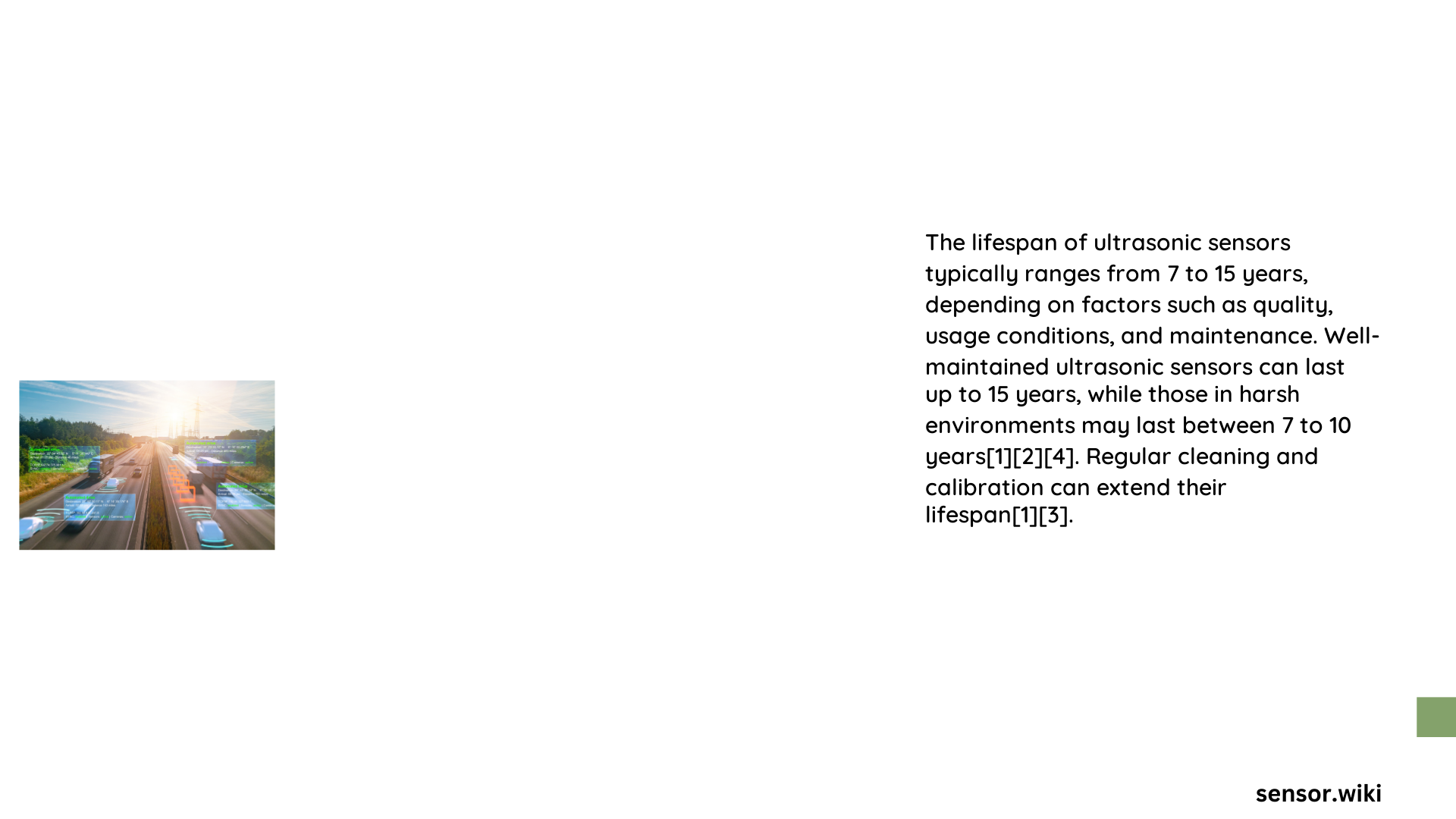Ultrasonic sensors are critical technological components with a complex performance lifecycle influenced by environmental conditions, usage patterns, and maintenance practices. Understanding their lifespan requires comprehensive analysis of multiple factors including operational parameters, environmental stress, and technological resilience. Proper management can extend sensor functionality from 7 to 10 years, ensuring consistent performance across diverse industrial and technological applications.
What Determines Ultrasonic Sensor Lifespan?
Core Performance Metrics
Ultrasonic sensor lifespan depends on several interconnected factors:
| Factor | Impact Range | Typical Durability |
|---|---|---|
| Environmental Conditions | Moderate to High | 5-10 years |
| Maintenance Quality | High | Up to 12 years |
| Operational Frequency | Moderate | 7-9 years |
How Do Environmental Factors Influence Sensor Performance?
Temperature Resilience
- Operational range: -40°C to +70°C
- Temperature compensation mechanisms protect sensor accuracy
- Extreme temperature variations can reduce sensor efficiency by 10-15%
Humidity and Chemical Exposure
- Low humidity: Minimal performance impact
- High temperature + humidity: Potential signal interference
- Chemical deposits can compromise transducer sensitivity
What Maintenance Strategies Maximize Sensor Longevity?
Cleaning Protocols
- Recommended cleaning interval: Every 1-3 months
- Use mild detergents and soft cloths
- Avoid abrasive materials and harsh chemicals
Inspection Checklist
- Surface dust and dirt assessment
- Alignment verification
- Physical damage evaluation
- Performance parameter testing
How Can Sensor Degradation Be Quantified?
Performance metrics reveal gradual sensor deterioration:
– Detection range reduction: 1-2% annually
– Signal accuracy decline: Proportional to environmental stress
– Potential failure modes:
– Air turbulence interference
– Mechanical stress impact
– Signal scattering from particulate accumulation
What Are Replacement Considerations?
Cost Analysis
- Average replacement cost: $50 – $500 USD
- Factors influencing replacement:
- Sensor quality
- Application complexity
- Environmental severity
Lifespan Extension Techniques
- Protective coating application
- Weatherproof housing implementation
- Regular calibration
- Proactive maintenance scheduling
What Financial Implications Exist?
Critical sensor failures can result in:
– Production downtime
– Increased maintenance expenses
– Potential safety risks
– Estimated loss: $5,000 – $50,000 per incident
Conclusion

Ultrasonic sensor lifespan is a dynamic interplay of technological design, environmental adaptation, and maintenance excellence. Strategic management can significantly extend operational reliability.
Recommendations
- Implement rigorous inspection protocols
- Invest in high-quality sensors
- Develop comprehensive maintenance strategies
Reference:
1. Pepperl+Fuchs Ultrasonic Sensor Documentation
2. Senix Sensor Technology Insights
3. Coltraco Sensor Systems Research
